I'm a science fiction, horror, history, comic book, Disney and all things gothic loving werido. "A serious goof ball" is an apt description. I post what I like, when I like.
Don't wanna be here? Send us removal request.
Text
Black ghost wife and living husband: hesitant open relationship so she can have intimacy (NSFW)
Anonymous asked:
I’m writing a romcom where the leading lady is a black ghost woman, and I've made sure to write them as healthy a couple as I could. About halfway through the story, she goes to her not-dead husband (He's a WASP, and also big on fidelity because of the P part), tells him that she misses sex, and asks if he'd be alright if she started a friends-with-benefits thing with the ghost who's haunting the neighbors. He's not exactly thrilled at the thought of that, but they can’t have sex anymore, so they have a long chat where she makes it abundantly clear that there’ll be nothing romantic between her and and the neighbor ghost, and eventually the couple sort it all out and reach a compromise where he doesn’t feel like he’s getting cheated on and she can have her needs met. And I realize this is speeding headlong at 120mph towards the promiscuous black girl stereotype, and so I’ve done everything I can think of to try to negate it. She’s very affectionate to him, I make it clear they only love each other, and of course, they have that little heart-to-heart before she goes to the neighbor ghost, but there’s no avoiding it because she’s the one who brought it up in the first place. So is there any other way I can make sure I only breeze over the stereotype like a speedbump instead of plowing right into it?
On stereotypes
Going in while aware of the stereotype sounds like a great start. I think having them talk about their relationship in an open and candid way shows their intentions. It sounds to me like they are negotiating how to open up their relationship to a third party (on her side) and if they discuss rules over exclusivity with their partners that it would counter the promiscuity issue.
That would however also open up the promiscuity stereotypes around polygamy though and keeping that in mind, broadening the perspective of what relationships might look like and what they are okay or not okay with would be good.
Aside from that, you’ll need to be mindful of how sexualized she’s portrayed on the page too, so having her be fleshed out, including having more than a “horny mode” (excuse me for a lack of better words). ~ Mod Alice
Ensure both sides consent to the arrangement
I'm not polyamorous, but I've read quite a few anecdotes where opening the relationship, so one partner can have sex, when the other person is unhappy about it, becomes the beginning of the end. Of course, neither were ghosts, but the point still stands.
So, please ensure your Black ghost wife is NOT coercing her husband into giving his blessing for her to have sex with others. That is, unless she is intentionally meant to be seen as more villainous or a possibly disliked character.
The polyamorous part, in itself, is not the potential pitfall; it is the fact that the husband is not okay with it. If he’s barely agreeing, then yes that can absolutely paint the Black character in a negative light beyond just hypersexualization. Again, if that’s your intention, so be it and perhaps add a more positive or neutral representation of a Black woman as well.
Now, if he agrees and either does become fine with it or grows into being okay with it, I think that’s an improvement, and consider all the things Alice mentioned above regarding your Black woman ghost’s characterization.
If it is not your intent to put her in a negative light, please ensure:
She is not forcing him into agreeing
It is truly a mutual decision
Perimeters are set where they are both comfortable, happy and secure
Other ideas that may work
And this is an aside, but more of a story exploration, so take it with a grain of salt:
Is it possible she could possess someone’s body in order for them to touch and connect physically?
Meet on the astral plane? In dreams?
I’ve seen this done in a couple of works.
SPOILERS UPCOMING: The Lovely Bones and the Umbrella Academy
The Lovely Bones book by Alice Sebold comes to mind. The dead character, Susie, kisses and has sex with her crush. The living woman, that she possesses, consents to being a “vessel” for them to have this moment together.
Note: I do not support this author, as a person, and only share this scenario as an example.
There were also a few scenes in the Umbrella Academy TV series.

One of the dead characters possesses his necromancer brother in order to connect to a woman he has a crush on. There are other scenes where he happily experiences physical touch again, such as a hug from his other brother, eating fruit, and so on.
That is to say; there may even be platonic ways where your character misses touch and intimacy. Perhaps the husband is comfortable with her cuddling another to recreate that bond of touch. It does not all have to be about sex, although that may be part of it.
Also, how does, say, “autoeroticism” work in the ghost form? Is it possible? I feel like it’s something the husband would have brought up during the conversation, since he initially was not okay with the idea of her being with another person.
Possible resource for you
The video game Banishers: Ghosts of New Eden shows the complex relationship between a living and dead partner. This might be of inspiration when writing their dynamic overall!

Black and poly followers, feel free to chime in with any insights.
Mod Leigh adds some super key additions to this that should really help this story, so please check it out!
~Colette
Commenting as someone nonblack but polyamorous, with permission from Alice and Colette.
Men Have Needs, Too
To echo Colette: the biggest thing for me here is the inequality in the agreement with the husband. In all of this discussion, you’ve never really explained how he views having a dead wife he can no longer have sex with. Has this impacted him much? Has he been silently suffering? What’s his view in all of this as someone sexual himself and his needs aren’t being met either? Men are allowed to have healthy sexualities, too, and I’d honestly love to see more of it.
And for me that’s a tiny bit of a problem; the “why” he is unhappy with it feels like it comes from taking a stock Christian archetype and then letting it sit there. Like, this archetype doesn’t come out of nowhere—a lot of Protestants are really, really, really serious about marriage and not divorcing, even though permission to divorce is kind of the foundation of Anglican denominations but I digress—but it doesn’t have to be such a stock trope.
Because really—what does he feel about their life? Has he considered going out and dating because of this, but he hasn’t brought it up because of his own hang-ups? Does he have crushes, or does he want to use the oft-done “cheat pass” that some even devout Protestant couples set up? Is his bristling at change in the relationship dynamic give way to relief he has freedom to go get his own needs met, too?
He had life plans gone awry, just like she did. What freedom is he getting out of this, and how is this mutually beneficial? It has to be mutually beneficial for this to not look like the male character is being sidelined. He has grief, and needs, and plans too. What’s he going to get out of this other than “not feeling cheated on”?
WASP does not mean personality-less, and I want to see more development of his character. Devotion comes in many, many forms, not just rigid fidelity to someone who can’t meet all your needs.
Christianity, Marriages, and Ghosts
This section is written with the assumption of a devout lens, because you emphasize he takes marriage seriously from his faith. If this section feels like a lot for the story, consider dialing him back to a more Easter/Christmas Christian, or cultural Christian, instead of devout. The previous section about his needs and the following section about polyamoury still apply even if you do dial his faith back, however.
Marriage vows are typically “till death do us part” so what in this world’s structure has made it that those vows have been modified? Premise given as-is, it wouldn’t actually be a sin for either of them to have new partners. So I’m guessing there’s something about his character and situation you’re leaving out in here, other than the fact that you’ve kinda taken an assumed attitude.
Protestant relationships with marital boundaries, divorce, separation, and fidelity are complicated, and highly depend on the denomination and level of conservatism. I wouldn’t take it as automatic that their married relationship continued into ghost-ness, because… like I said, death is considered an acceptable reason to find a new partner.
What caused them to stay married when she’s a ghost, especially if there were other life plans in there that maybe included kids? Do people know she still exists? Does she go out with him, run a household with him, or otherwise just exist in his life as a solid force for him to even still feel like they’re married? These are all questions I’d ask to sus out the basic foundation of what leads to this conversation in the first place, and why the premise exists.
This isn’t even getting into how ghosts are kind of mistrusted in a lot of Protestant groups (I ran this answer by a couple devout friends of mine and one of them was straight up “I’d genuinely expect him to be more hung up about getting proof ghosts are real than introducing a new partner”). So there’s that to consider, too.
The dead are supposed to be hanging out with God, now, and marital love is part of the spiritual tradition where you’re supposed to care for your partner like God does (no I am not getting into how abusers manipulate this, I am assuming this is a healthy relationship because good Christian marriages do exist and I’d love to see more of the fluffy, caring side of this in media). So this “actual ghost, now gotta figure out how to have a very imperfect human covenant with just a soul when it’s supposed to be physical and spiritual” is a thing. Most healthy Christians I know actually have a huge emphasis on in person, reach-out-and-touch relationships, so I’d want to see him have one, too.
I’m very seriously asking what it is you’ve changed about Christianity to make it that one of the foundational principles of marriage—death parts you—has gone away? Sure, you can handwave it, but I’d suggest you look into things to see how you’ve decided to change Christianity or what faith stuff he’s had to wrestle with, having a ghost wife.
You also haven’t addressed her faith, either. Was this a mixed-faith or mixed-devotion marriage? That could add in an unintentional consequence of racism because look at him, the devout Protestant white man, marrying a non-religious person who then brings in a third person! This is why you must only marry other Christians, and also preferably other white Christians. It’s not a good look.
In short: Why does he consider himself still married to her, with all of those marital trappings, to the point he has this degree of possessiveness? (this is not bad possessiveness, I should add. Married couples and otherwise committed couples have a set of agreed-upon boundaries for how they behave with others, because partnership is, at its core, a set of agreed-upon boundaries for what is shared; in more secular terms: a polyamorous couple sharing fluids is going to have very strict rules over who they add in as sexual partners to avoid STIs)
Primaries, Secondaries, and Romance-Centricism
There’s this degree of relationship hierarchy I’m not necessarily thrilled with, honestly. Primary and secondary partners are definitely a thing in polyamorous spaces, don’t get me wrong, but this devaluing of the ghost partner feels… off? Like, it feels placating to the husband, because it seems like there are feelings there, as sex involves some degree of trust. As Colette said, this dynamic feels like the beginning of the end of them.
Also the whole valuing of romantic relationships above all else is… exhausting, as an aromantic person. We all share things with different people, and the heavy, heavy focus on romantic coupling can be a pretty isolating worldview. Yes, some people do a lot better when partnered with another human, and a lot of people pick marriage as that partnership they do a lot better with having, but it doesn’t mean your extended network of friendships is any less important? And some people elect to have their primary partner be platonic, or just sexual, whether or not they’re aromantic.
And yes, this “needs a partner around to function” thing could be a reason they’re still married! They both do better with other humans and don’t want to immediately rebound because of death. But is the relationship anything more than that, come the point she’s starting to miss sex? How has that immediate pang of grief evolved and changed and moved on, on both sides?
It basically feels like the whole justification for why he should be okay with it is she’s still like… spiritually devoted to him (using this wording because of his Protestant faith and her professing of romantic love as a metaphor of spiritual love), that makes this other partnership just… not important? And I don’t know if you really wanna set that up, especially since it does kinda feed into the concept that it’s only not cheating if the other partner is devalued. How would the neighbouring ghost feel, if they found out they’re chopped liver compared to her alive husband?
A sexual bond is allowed to be important even if there’s no romance, and an exclusion of romance doesn’t mean the bond is worthless. I really don’t like the implications that the romantic bond is “better” and the only reason another partner gets brought in is they’re, well, being used.
In Short: Revise With A More Mutual Lens
Really, from a polyamorous standpoint and a Protestant standpoint, this is a mess. Protestant wise, I ask again why he’s acting like they’re still married even though she’s dead and usually death frees you from marital fidelity. Polyamorous wise, I’m annoyed that there’s no room to explore a relationship that is notably different from your primary relationship, and instead it goes into “oh this other person isn’t anyone you need to worry about, I don’t love him the way I love you” which is just the worst stereotype of being a third partner and gives many people who are friends with married couples complexes over being replaced.
My suggestion is genuinely to have this turn from what you have now to the husband also breathing a sigh of relief that he didn’t want to hurt her feelings by her being able to see he was moving on, but he also wants to go explore other relationships to get his needs met, and they learn to explore a dynamic of being still deeply in love, but admitting where they can and cannot meet each other’s needs and setting up a new relationship in more of a quad.
This would fit the romcom vibes more, because honestly it sounds hilarious to me to watch a ghost couple and a living couple try to learn to cohabitate. It also allows for a much broader depth of feelings, because each partner is going to provide something different to the person? And instead of needing to shut down insecurity, jealousy, or all of these “eggshell feelings” to make things look shinier than they are to protect the husband’s ego, you can have open discussions that emphasize how love even works—you get different needs met from different people, and just because one person isn’t your everything doesn’t mean they don’t have value to you.
This also gives room for them to both wrestle with it, because adding in a new partner to a dynamic makes a lot of monogamous people have ruffled feathers. But having this whole scenario get more fleshed out where there is a history of them wrestling with their new dynamic would definitely help offset the ick of how polyamory is treated right now. If both sides are considering separating because of needs the other can’t meet, then there’s a lot less hurt to happen in the first place and it’s not just the Black woman wanting sex. It becomes a scenario of how to navigate pre-existing love with new love, which for me is a lot lighter, a lot more fun, and a lot less likely to land either of them into negative stereotypes.
You have some good depth and drama with all of these interpersonal dynamics, but also the hilarity of being haunted by your primary partner. It really sounds like a lot of fun, but the way you have it right now would not work for me. I’d probably put the book down from a polyamorous perspective even if you managed to avoid the promiscuous Black woman trope.
~ Leigh
P.s.—yes I do identify as polyamorous and aromantic. The definition of “partner” is broad, and so long as everyone consents, who cares.
271 notes
·
View notes
Text

Finally stitched an Ellen for my Count Orlok plushie 🧛🏻♂️
219 notes
·
View notes
Text
“Nosferatu” (2024) and the Female Gothic Genre, Paganism and the Occult
The Gothic novel genre is deeply connected with female authors like Ann Radcliffe, Mary Shelley, Brontë sisters, Mary Robinson, and Charlotte Dacre, because it allowed them to explore themes that were “off limits” to women at the time (19th century) especially sexuality and women’s place in a patriarchal society. Hence the “Gothic female” genre was created, as a way for female authors and readers to digest their mixed feelings about these topics. This is the world Robert Eggers transports his audience in “Nosferatu” (2024).

This film checks every box of the Gothic genre: claustrophobic atmosphere, environment of fear, the threat of the supernatural, ruined buildings (usually from the Medieval ages), dreamlike states, nocturnal landscapes, demonic possession, blend of “high culture” and “low culture” (folklore), superstitious rituals, melancolia, melodrama, decay, fate, the macabre, the intrusion of the past into the present, stories of persecution, imprisonment and murder as metaphors for social conflict.
Indeed, the audience can’t analyze this story through contemporary lenses or bias, because it’s suppose to be an immersive experience into the Gothic genre and the Victorian era. The terms “gothic” and “romantic” exist in their historical context; “gothic” as in the literature genre (gothic novel), and “romantic” as in the 19th century artist movement (Romanticism).
No, this is not a story about grooming nor abuse... it can be, but not in the way many are interpreting it. Folks also need to let go of previous adaptations and their meanings, because this is Robert Eggers take on this story. And, it’s everything a remake (or retelling) should be, because its not a rehash, it’s a new interpretation of a old story, “Dracula”.
Robert Eggers tells us that the themes of sex and death are at the core of his story, it’s a “demon lover story”, and it’s Count Orlok and Ellen psychosexual connection that makes his adaptation different from the rest.
Ellen is our female gothic protagonist, and, like similar characters of the genre, she’s a persecuted heroine fleeing some a villainous outside force, personified by Count Orlok, the archetypal Death. Metaphorically, she’s a young woman haunted by her own mortality, by Death itself. She also has a sense of Doom looming over her, the heavy hand of Fate; can we outrun our destiny? “Providence!” Herr Knock screams throughout the film; as in a supernatural force, commonly God, guiding humanity destiny.

Ellen is no typical young woman, though. As she tells Von Franz, she had occult powers since childhood, being able to perceive glimpses of the future and suffering premonitions (knowing the contents of her Christmas gifts and when her mother would die). Her father called her “his little changeling girl”, as in the European folklore of human children kidnapped by supernatural creatures (fairies, demons, etc.) and a substitute being left in their place. Herr Knock also compares Ellen with a “sylph”, when he informs Thomas he’s to travel to Transylvania. “Sylphs” are air spirits from 16th century Germanic folklore and alchemy, a sort of nymph connected to air element in hermetic literature; throughout the centuries they have been culturally associated with fairies, too. We have two characters in the story connecting Ellen with a fairy-like creature. Interestingly enough we, the audience, see her floating in the opening scene.

“You are not for the living. You are not for human kind”, Orlok tells her, and calls her “enchantress”. Von Franz also said Ellen could have been a priestess of Isis had she been born in pagan times. Isis is one of the major Egyptian deities, considered the goddess of magic and healing. She was also connected with the Dead and funeral rites, since she was the sister-wife of Osiris, ruler of the Underworld. Pagan priestesses also entered trancelike states as Ellen “hysterical seizures” or “epilepsies” when communicating with the spiritual world, which is what Von Franz, the occult and alchemist student, recognizes in her. Ellen is a supernatural force, too.
Eggers Orlok was a sorcerer in life, a practitioner of Black Magic. He was one of the Solomonari, wizards from Romanian folklore, believed to be students of the Devil, who learned to ride dragons, and control beasts and the weather. In Eastern European tradition, the Solomonari were believed to be recruited among common folk and disguise themselves as beggars, Orlok is a Romanian nobleman who sought to achieve immortality, to conquer Death. As the abbess tells Thomas, the Devil preserved Orlok’s soul that his corpse may walk again in blasphemy, as a vampire feeding off the blood of the living and spreading plague.

However: who was it who awoke Orlok in “Nosferatu”? The Devil or Ellen?
At the prologue, we see Ellen crying and begging for companionship. She prays for a guardian angel, a spirit of comfort, a spirit of any celestial sphere, anything, to hear her call and come to her. She’s summoning some occult force and inviting it into her life. Orlok answers her call. And why is she doing this? She feels lonely, isolated and misunderstood by those around her. As she tells Von Franz, she’s no longer her father’s “little girl” and he recoils from her touch, because she’s no longer a child. As she grows older and enters womanhood, she starts to feel ostracized and put aside by 19th century society who has rigid gender expectations of her.

According to Orlok, it was Ellen who awoke him: “O’er centuries, a loathsome beast I lay within the darkest pit… ‘til you did wake me, enchantress, and stirred me from my grave. You are my affliction.” Which Ellen later confirms to Thomas: “I have brought this evil upon us” because she sought companionship and tenderness. This is a belief Von Franz also shares: it’s Ellen who “wills it”, and she’s the one who unleashed this plague upon the world.

This is very fitting with the Gothic female novel, where the supernatural connects with female societal status of this time period, generally women’s discontent with patriarchal society, difficult and unsatisfying maternal position (in “Nosferatu” we see this with Anne’s character, where she equals being pregnant with being drained of her life force) and their role within society (fear of entrapment in the domestic sphere, their bodies, marriage, childbirth, etc.).
Eggers’ Orlok is a combination of several Romanian folklore creatures, associated with vampirism: strigoi, moroi (these two are the “classic” vampires) and zburător (a ghost-like creature, usually handsome, and only visible to young women, attacks at night, usually newly-wed ladies and does “indecent” things with them). The influence of this legend in Ellen and Orlok story is evident.
Ellen tries to summon a spiritual companion in her teenage years, most likely when she reached puberty and her sexuality was starting to awake. A demon who’s a personification of appetite, devourance, sex and death is the one who answers her calling. They end up in a sexual spiritual connection, as Ellen experiences her sexual awakening with him, as shown in the prologue and later confirmed how Orlok took her as his lover. She also reveals to Thomas it was “sweet” and she “had never known such bliss” at first, until it turned into torture (seizures and nightmares), when her father found her laying unclothed and called her a sinner and it’s implied she might have been institutionalized, as she tells Von Franz. This episode might be a metaphor for masturbation and the historical shame associated with it. Hence her connection with Orlok being her “melancholy” (depression) and her “shame”, symbolic for the sexual urges 19th century society forced women to repress.
Count Orlok is the archetypal Death; which culminates with the “Death and the Maiden” motif at the end. This was a very popular Art History archetype around the so-called “Plague years” (14th to 16th century) in Europe, and it’s often connected with other motifs like “Danse Macabre” and “Memento Mori”. It has several meanings depending on the author intent, usually a reminder of our mortality, but also a meditation on sex and death, as in the French “la petite mort” (“little death”), the post-orgasm sensation, sexual release potentially causing temporary loss of consciousness (fainting) or dizziness. In the Medieval Ages, physicians believed orgasms could lead to death because they drained the “life force” from the body. This was when the term “petite mort” was created, and this belief persisted into the Renaissance and beyond. In “Nosferatu” this probably translates in the sexual pleasure that Orlok imprints on his victims as he drains their life force.
Ellen’s “hysterical seizures” miraculously stop once she meets and marries Thomas Hutter, our tragic romantic hero. This can also be a nod to Gothic Bildungsroman (“coming of age”) genre; where the female protagonists grow from adolescence to adulthood in the face of the impossibility of the supernatural, and come to the conclusion there’s a rational explanation. In Ellen’s case, it’s medical, as she’s diagnosed as a melancholic somnambulist hysteric (in another words, a depressive hyper-sexual sleepwalker).
At the beginning of the story, Ellen and Thomas are newly-weds fresh out of their honeymoon, which means sex (historically necessary to consummate marriages). With Thomas, Ellen is “free of her shame”, as she says so herself. Because, her sexuality is safely contained within marriage, as it’s socially acceptable. But Thomas dismisses her concerns about his well-being, and doesn’t believe her until he experiences the supernatural first-hand, having an homoerotic encounter with Orlok himself, which also causes him great shame. This is probably a Easter egg for Bram Stoker possible closet homosexuality and “Dracula” being a metaphor for that.

Thomas’ main concern, throughout the story, is to fit into the patriarchal ideal of his genre, as a provider for his wife, and he aspires to be like his long-time friend, Friedrich Harding, the “perfect patriarch” with the perfect religious and dutiful wife, Anna, and their precious children. The Hardings are the perfect Victorian family; they are everything society expects them to be. Friedrich even chastises Ellen for her nature, and it’s clear he resents her for what she represents: “otherness” and “deviance” to societal norms.

However, soon enough, Ellen’s seizures return, symbolizing Thomas cannot sexually satisfy her. She’s “too ardent” as Harding calls her. “More! More!” She begs Thomas when they have sex to scorn Orlok. Not only her sexuality is too strong, but Thomas also shares with Friedrich his desire to wait to have children with Ellen because he wants to gain financial stability first. This in a time period when contraceptives weren’t widely spread, meaning abstinence.
Symbolically, Ellen’s seizures can also be connected with her fear of childbirth. Her “epilepsies” return while she’s staying in the Harding household, where they are children and Anna is pregnant. Children is what is expected of Ellen next, after all. But it’s sexual pleasure that Ellen seeks, and this causes her great shame and torment, because 19th century women weren’t suppose to known “such things”. “Sin! Sin! Sin!” as Ellen’s father screamed at her when he found her naked.

Fear of entrapment represented as Ellen tries to rip off her corset and “free herself”: this happens during one of her Orlok induced seizures.
As Robert Eggers tells us, Orlok both disgusts and attracts Ellen, she loves and hates him at the same time. He’s repulsive, rotten, animalistic and lustful, both literally and metaphorically. His character design is meant to invoke contradictory feelings in the audience: overall he’s foul and monstrous, but he appears almost handsome in some shots. This is intentional. Not only he’s a personification of Death, but of Ellen’s repressed sexuality by 19th century society. He represents the monstrous and dangerous female sexuality the Victorian era sought to contain. He’s the transgression and taboo theme in this Gothic story, as well: necrophilia. Which is probably Eggers “gotcha” moment to “vampire lovers” everywhere, as he forces his audience to confront their own bias.

Ellen herself is a medicalized character, as we see her being institutionalized, drugged, bound to her bed, forced to wear a corset to bed, and used as a scientific experiment by physicians. She’s not in control of her own body, and has little agency over it, overall. We see her being contained, literally and metaphorically, too. This is probably meant to symbolize women as a whole in 19th century Western European societies. The “disability of being female” is one major theme in Gothic female novels, after all.

And if Ellen unleashed Orlok unto the world and he’s connected with her what does this mean for this story? The obvious interpretation of the ending it’s Ellen sacrificing herself to save Wisburg from Nosferatu’s curse, like every other adaptation. But this appears to be somewhat disconnected from the overall themes of this particular retelling. Here, it’s Ellen who unleashed the curse, and only her can put an end to it.
We see Ellen summoning Orlok in two occasions: at the beginning and at the end of this tale. At first, she did it unconsciously, she dabbled with the occult and wasn’t aware of what she was inviting into her life. However, does this indicate Ellen has some degree of control over him? Orlok himself says she’s “his affliction”, and they are bound to one another. She’s not only a seer, she’s compared with a priestess of a Goddess associated with funeral rites and with the ability of resurrection and looking after the Dead (Isis). We can almost interpret her as a necromancer.
Here, we can have a different interpretation of Orlok unleashing a plague upon the society who ostracizes Ellen for her nature. Symbolically, he’s her reckoning, her vengeance upon society norms and expectations of gender. He’s the “plague carrier” and brings a “blood plague” transmitted by rats (symbolic of the Black Plague; the medieval ages terrorizing the modern world of science and rationality) upon Wisburg, and the “good Christians” who contain and shame “Pagan” Ellen.

Orlok’s most notorious victims are the Hardings, the perfect patriarchal Christian family model Ellen can never fit into; the patriarch Friedrich, the pregnant Anna and the two children. This also fits the Gothic female genre of the supernatural menace as a metaphor for women’s status in 19th century society. Ellen doesn’t want to be married to a patriarch like Friedrich, she doesn’t express any desire to become pregnant nor have children of her own. Consequently, we see Orlok killing all of these archetypes in the narrative.
Interestingly enough he spares Thomas and saves him for last when he should be his first victim once he arrives at Wisburg, because he’s the husband. However, Thomas is a character Ellen loves and cherishes, as he somewhat accepts her nature and represents her chance at a “normal life”. He’s also determined to save her from Death/Orlok, but is unable to. Symbolically, Ellen chooses death over conforming to gender norms and expectations.

However, we can’t forget Ellen’s supernatural nature, nor her connection with Orlok. She weds Death at the end, she’s no longer terrified of him, and she fulfills their covenant, and her dream premonition of marrying Death: “standing before me, all in black… was… Death. But I was so happy, so very happy. We exchanged vows, we embraced, and when we turned round, everyone was dead. Father… and… everyone. The stench of their bodies was horrible. And - But I never been so happy as that moment… as I held hands with Death.”
A “covenant” is a pact, both a religious and a occultist practice. This is a “blood covenant”, as their flesh becomes one and he drinks from her. “Blood is the life” is a quotation from the Bible, where “blood covenants” are also mentioned, because a “blood covenant” has the power to either destroy or redeem. For instance, Christ’s sacrifice redeemed humanity according to Christians. “Redemption” as Von Franz says, because only Ellen, like Christ, can redeem the habitants of Wisburg. He uses the expression “with Jove’s holy light” before dawn redemption will come to them: “Jove” is Jupiter, the “King of the skies”, and its energy neutralizes Saturn’s, connected with “melancholy” (depression).

However, that’s not what’s happening here, because Orlok is a servant of the Devil, and a literally un-dead “warlock”. So, what is Ellen pledging herself to here, exactly? Her covenant with Orlok has nothing to do with God or Jupiter, for these are forces of good, when Orlok is a force of evil and darkness.
Ellen also fulfills her role as “priestess of Isis” at the end, as she guides the un-dead Orlok to his physical death; like Isis, she resurrected him, and is now taking him into the Underworld with her. Because, like Orlok also told her, she’s “not for the living”, that’s her fate, the destiny she accepts at the end; she’s meant for Death, as Isis for Osiris.
“Our covenant is fulfilled. Your oath re-pledged.” Orlok tells her. But what was Ellen’s oath? We have to look into the prologue scene “You shall be one with me ever-eternally. Do you swear it?” And in the ending “As our spirits are one, so shall be our flesh. You are mine.” They fulfill their pact both in the physical and the spiritual worlds, and both make the ultimate blood sacrifice, by physically dying for “self-renunciation” is essential for blood covenants.
And a deity is always summoned to bless such a pact… but who was blessing this one? Ellen and Orlok indeed, died in the physical world, but are joined in the spiritual world forever, as decreed by their covenant, so where did their spirits go?

They are also surrounded by lilacs, their signature flower throughout the narrative, which symbolizes first love, yes, but also renewal and rebirth. Orlok conquered Death and immortality once before, because the Devil kept his soul. Now that Ellen is joined with him in spirit, what does this mean for her, and for them both?
735 notes
·
View notes
Text


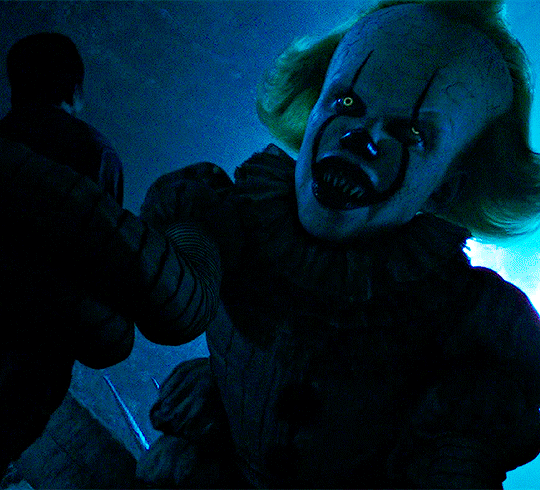

#do you? Barbarian (2022) Hemlock Grove S02E02 (2014) It: Chapter Two (2019) Nosferatu (2024)
1K notes
·
View notes
Text

“Shall you be the one with me, ever eternally?”
4K notes
·
View notes
Text




Costume Concept Art for Nosferatu (2024) by Linda Muir
12K notes
·
View notes
Text

Bisexuals have Kal Ho Na Ho
Bisexuals have PotC
Bisexuals have Jodha Akhbar
Hmm what else? Most srk movies I think. Is that because I love srk? I don't know. Maybe.. Bisexuals have srk.
41 notes
·
View notes
Text
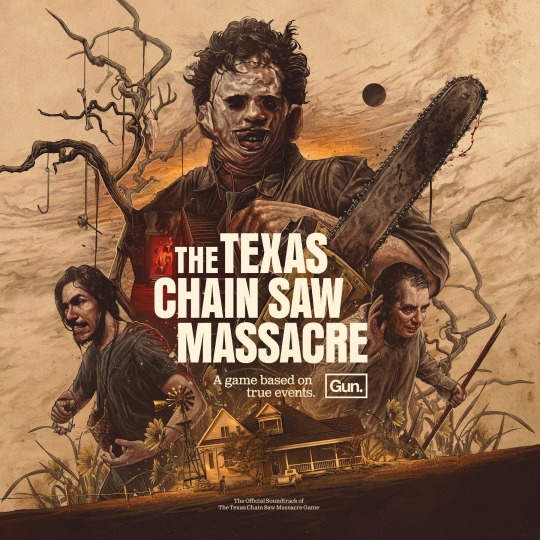
Day 31 of my 31 days of horror
Factoid: Director Tobe Hooper claims to have gotten the idea for the film while standing in the hardware section of a crowded store while Christmas shopping. While thinking of a way to get out through the crowd, he spotted the chainsaws
2 notes
·
View notes
Text
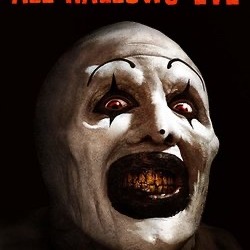
Day 30 of my 31 days of horror.
Factoid: The movie that the children are watching is George A. Romero's Night of the Living Dead (1968), widely regarded as the first modern zombie film. Clips of this film are frequently included in horror movies because the makers forgot to properly copyright it, meaning that Night of the Living Dead fell into the public domain, and footage from it can be freely used.
2 notes
·
View notes
Text


shoutout to C418 (one of minecraft’s composers) for just fucking snapping recently on twitter
101K notes
·
View notes
Text
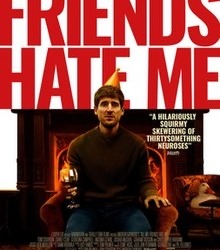
Day 29 of my 31 days of horror
Factoid: The remix of What A Fool Believes by the Doobie Brothers played in the car at the start of the movie by Pete is Danny Dance Extended Journey.
0 notes
Text

Day 28 of my 31 days of horror.
Factoid: The film was conceived and co-written by Joshua John Miller as a way of dealing with the death of his dad, Jason Miller, who had starred as Father Karras in The Exorcist (1973)
0 notes
Text

Movie 27 of my 31 days of horror.
Factoid: Kentarô Hagiwara cites The Last Samurai (2003), Kill Bill: Vol. 1 (2003) and District 9 (2009) as an influence on the film, describing them as "strong stories punctuated by action."
0 notes
Text
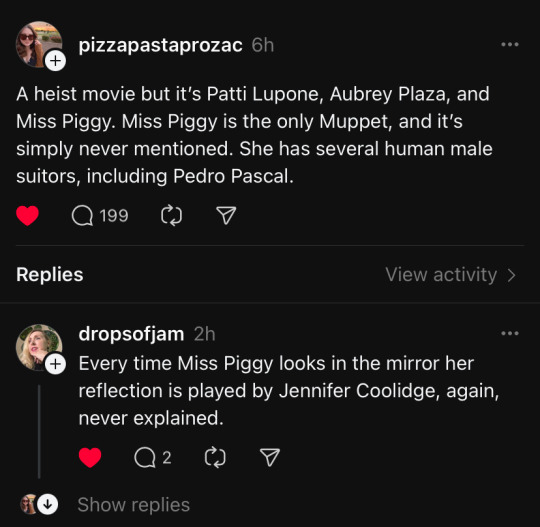
This is the best idea in the history of film.
167K notes
·
View notes
Text
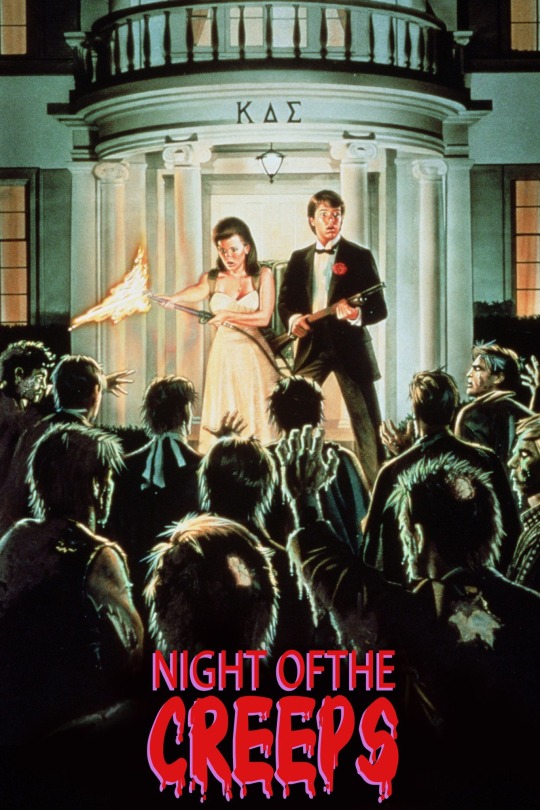
Day 26 of my 31 days of horror
Factoid: Grafitti on the wall of the men's room where J.C. is trying to escape a number of slugs reads, "Go Monster Squad!" The Monster Squad (1987) was also directed by Fred Dekker.
0 notes

